Panjie Qi
Accelerating Framework of Transformer by Hardware Design and Model Compression Co-Optimization
Oct 19, 2021
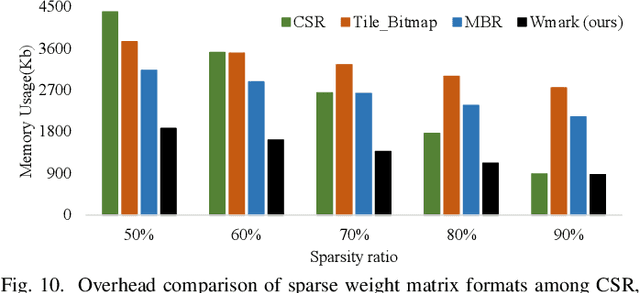
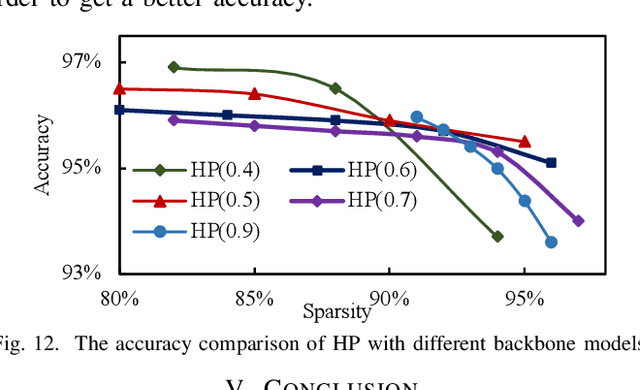
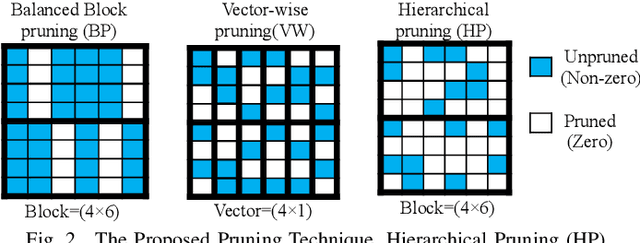
Abstract:State-of-the-art Transformer-based models, with gigantic parameters, are difficult to be accommodated on resource constrained embedded devices. Moreover, with the development of technology, more and more embedded devices are available to run a Transformer model. For a Transformer model with different constraints (tight or loose), it can be deployed onto devices with different computing power. However, in previous work, designers did not choose the best device among multiple devices. Instead, they just used an existing device to deploy model, which was not necessarily the best fit and may lead to underutilization of resources. To address the deployment challenge of Transformer and the problem to select the best device, we propose an algorithm & hardware closed-loop acceleration framework. Given a dataset, a model, latency constraint LC and accuracy constraint AC, our framework can provide a best device satisfying both constraints. In order to generate a compressed model with high sparsity ratio, we propose a novel pruning technique, hierarchical pruning (HP). We optimize the sparse matrix storage format for HP matrix to further reduce memory usage for FPGA implementation. We design a accelerator that takes advantage of HP to solve the problem of concurrent random access. Experiments on Transformer and TinyBert model show that our framework can find different devices for various LC and AC, covering from low-end devices to high-end devices. Our HP can achieve higher sparsity ratio and is more flexible than other sparsity pattern. Our framework can achieve 37x, 1.9x, 1.7x speedup compared to CPU, GPU and FPGA, respectively.
Dancing along Battery: Enabling Transformer with Run-time Reconfigurability on Mobile Devices
Feb 12, 2021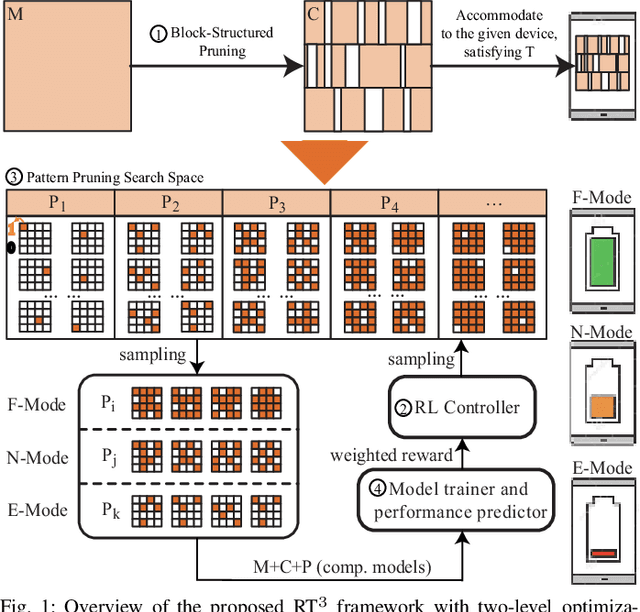

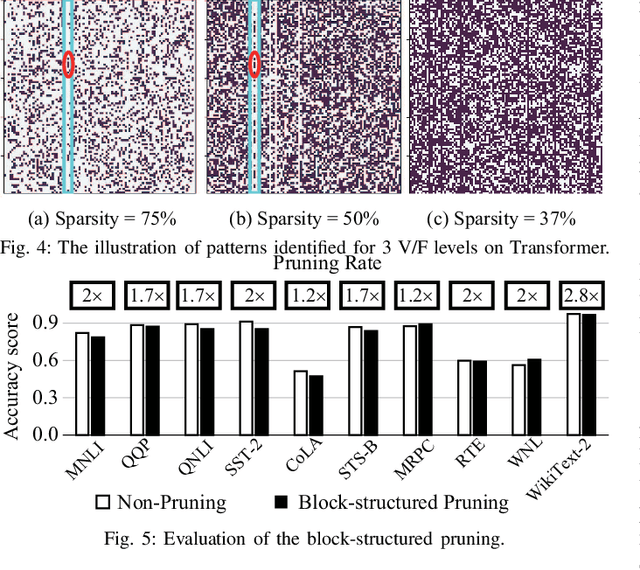

Abstract:A pruning-based AutoML framework for run-time reconfigurability, namely RT3, is proposed in this work. This enables Transformer-based large Natural Language Processing (NLP) models to be efficiently executed on resource-constrained mobile devices and reconfigured (i.e., switching models for dynamic hardware conditions) at run-time. Such reconfigurability is the key to save energy for battery-powered mobile devices, which widely use dynamic voltage and frequency scaling (DVFS) technique for hardware reconfiguration to prolong battery life. In this work, we creatively explore a hybrid block-structured pruning (BP) and pattern pruning (PP) for Transformer-based models and first attempt to combine hardware and software reconfiguration to maximally save energy for battery-powered mobile devices. Specifically, RT3 integrates two-level optimizations: First, it utilizes an efficient BP as the first-step compression for resource-constrained mobile devices; then, RT3 heuristically generates a shrunken search space based on the first level optimization and searches multiple pattern sets with diverse sparsity for PP via reinforcement learning to support lightweight software reconfiguration, which corresponds to available frequency levels of DVFS (i.e., hardware reconfiguration). At run-time, RT3 can switch the lightweight pattern sets within 45ms to guarantee the required real-time constraint at different frequency levels. Results further show that RT3 can prolong battery life over 4x improvement with less than 1% accuracy loss for Transformer and 1.5% score decrease for DistilBERT.
 Add to Chrome
Add to Chrome Add to Firefox
Add to Firefox Add to Edge
Add to Edge